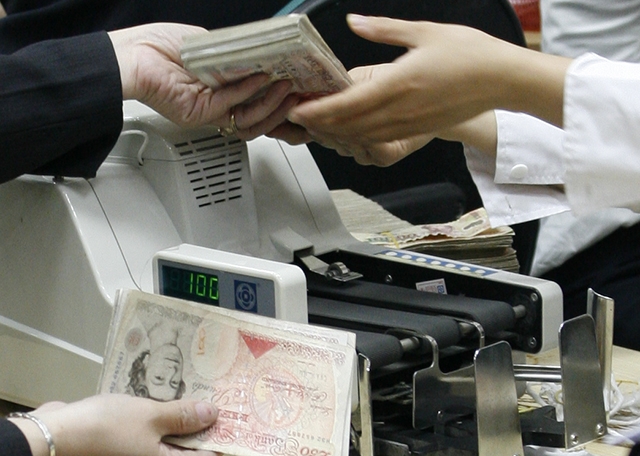Public debt may exceed the cap of 65 per cent of GDP in the second half of this year, the ongoing National Assembly (NA) meeting heard on July 21.

In its latest economic development report presented to the new legislature the government also acknowledged that GDP growth is unlikely to reach the 6.7 per cent target.
Growth was 5.5 per cent the first half, much lower than the 6.47 per cent recorded in the same period last year, according to the General Statistics Office (GSO).
Downturns in mining and agriculture are largely responsible, the report noted.
Due to the disappointing GDP growth the budget deficit may also exceed the cap of less than 5 per cent of GDP.
According to the government, borrowings in the 2016-2020 period are estimated at VND2,260 trillion ($101.3 billion), or some VND450 trillion ($20.2 billion) a year, equal to 8.13 per cent of GDP.
Borrowings in 2020 will be VND540 trillion ($24.2 billion).
The cost of servicing government debt in 2016-2020 is estimated at VND2,000 trillion ($89.7 billion), or 6.44 per cent of GDP.
Government debt, meanwhile, was reported at VND1,830 trillion ($86 billion) in 2014, doubled the figure in 2010, according to a June report from the Ministry of Finance (MoF).
Domestic debt was more than VND1,000 trillion ($47 billion) and foreign debt VND800 trillion ($39 billion).
In order to meet the 6.7 per cent GDP target for 2016 growth in the second half must reach 7.6 per cent, or 2 per cent higher than the first half, the government report added.
According Mr. Vu Dinh Anh, Deputy Head of MoF’s Market and Price Research Institute, GDP growth is always higher in the second half of the year.
However, he believes that while GDP will increase “it is very unlikely to reach the 6.7 per cent targeted for 2016.”
A World Bank report released on July 19 put the budget deficit at VND70 trillion ($3.1 billion) in the first five months of this year, or almost 28 per cent of the annual target approved by NA.
Vietnam faces a tough time as the State budget, which primarily relies on tax collections, has been in deficit for an extended period, with expenditure continually outpacing revenue.
State budget expenditure was VND562.5 trillion ($25.2 billion) in the first half, or 44.2 per cent of the annual plan and up 4.9 per cent.
State budget collections in the first six months were VND476 trillion ($21.6 billion), equal to 46 per cent of the annual plan and up 6.1 per cent year-on-year, according to the MoF.
Ms. Nguyen Thi Kim Ngan, the newly-re-elected Chairwoman of the 14th NA, said that the legislature is looking at the issue closely and cautiously.
“The 14th NA will monitor public debt to bring it back under control,” she said on July 23 at her first press conference after being elected.
The global debt clock at The Economist has Vietnam’s public debt at $94.8 billion, or $1,040 per person.
According to MoF, in the 2011-2015 period government debt was VND1,930 trillion ($86.5 billion), 2.9-fold higher than in 2006-2010 and 19 per cent higher annually.
The cap on public debt is 65 per cent of GDP. As at the end of 2015 it was 62.2 per cent, according the WB’s report.
“Accumulated fiscal imbalances remain a cause for concern, with the fiscal deficit estimated to have widened to about 6.5 per cent of GDP in 2015,” according to Mr. Achim Fock, the WB’s Acting Country Director for Vietnam.
“As a result, total outstanding public debt was estimated at 62.2 per cent of GDP, inching quickly towards the ceiling of 65 per cent. Fiscal outturns in the first months of 2016 suggest that budget pressures persist.”
On a positive note, the government believes inflation was managed well in the first half but still has the potential to break out.
Supply factors might put pressure on prices in the near term and inflation may therefore exceed the 5 per cent target set by the NA.
VN Economic Times